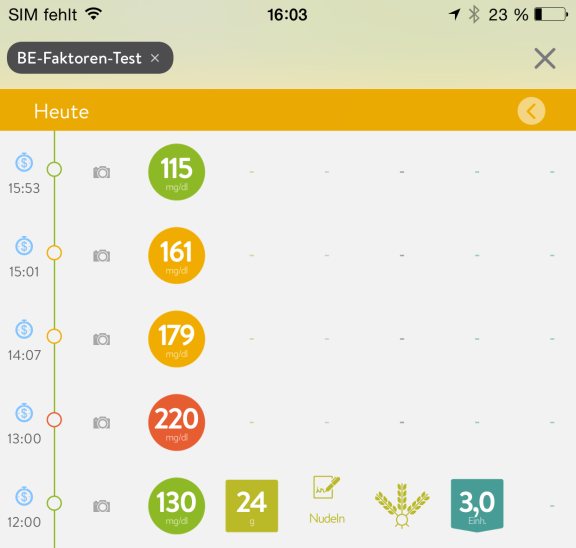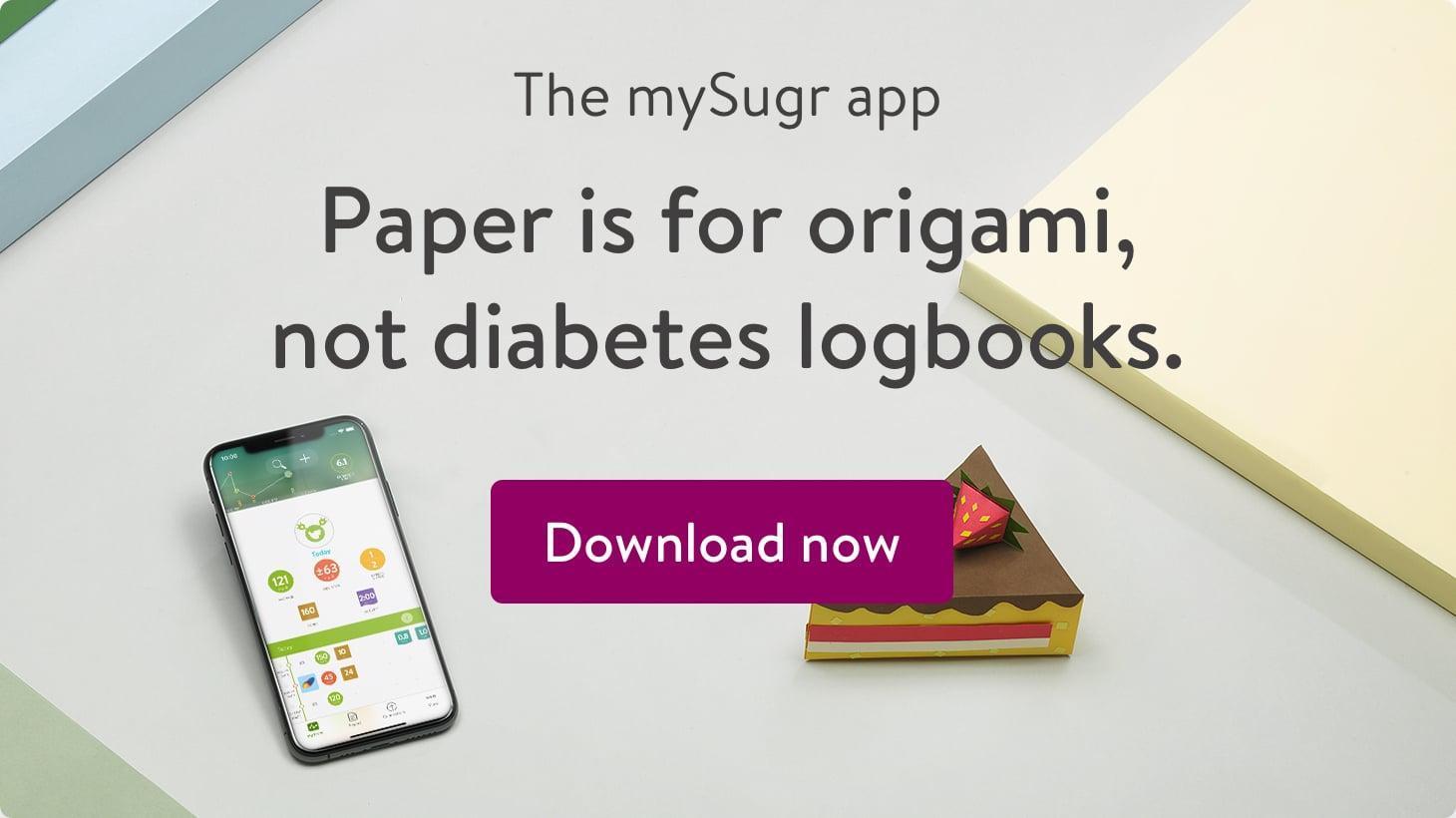Don’t Be Afraid of Change!
Sure, that’s the nature of diabetes sometimes. My blood sugar just doesn’t behave the way it should.
But maybe there’s more to consider. Should I take a closer look at anything? My carbohydrate ratio or correction factor for example?
Bodies do change over time, so maybe my meal and correction insulin also needs to be checked and adjusted.
Unfortunately, I have often made the mistake of only looking for incorrect settings in my basal insulin. But after doing a few basal rate tests, which showed I was correctly dialed in, I started looking more closely at my carb ratios and correction factors.
At first, I made big adjustments, wildly increasing or decreasing my settings. This backfired, of course, resulting in a roller coaster of highs and lows.
Instead, I should approach it a bit more systematically and follow a few simple rules, to help avoid such a wild ride. Let’s take a look at that now.
Documentation is the first step in the journey, so log as much detail as you can in the mySugr Logbook. A helpful tip is to also add a note to each entry that says “carb ratio test,” or “correction factor test,” so you can search for them later if needed.
And remember, you shouldn’t delve into your carb ratios and correction factors until you’re sure your basal settings are correct.
Insulin to Carbohydrate Ratio(s)
Knowing your insulin to carb ratio(s) allows you to calculate how much rapid-acting insulin you need for a given meal or snack.
Your insulin to carbohydrate ratio is how many carbohydrates (measured in grams or exchanges) one unit of insulin covers to return your blood sugar back to where it started before eating, for your postprandial glucose check.
For example, an insulin to carb ratio of 1:15 means that one unit of insulin will cover 15 grams of carbohydrates. If you ate 45 grams of carbohydrates, you would need three units of insulin (3x15=45).
Insulin to carb ratios can vary based on the time of day and can change over time. Ratios should be rechecked at different times of the day and verified periodically.
Factors like weight gain or weight loss can change your insulin to carb ratios.
You also want to be confident in your basal or long-acting insulin doses because inaccuracies can interfere with test results.
What to Consider Before Testing Your Carbohydrate Ratio
- Recommended to start with a stable blood sugar target range of 90-180 mg/dL (5-10 mmol/l)
- No active rapid-acting insulin: wait until at least 4 hours after your last rapid-acting insulin dose and meal, or 6 hours if using regular insulin.
Avoid eating a lot of protein and fat with your last meal before testing. - The test should only be carried out if your glucose level is stable (for CGM and FGM users: horizontal trend arrow)
- No unusual level of exercise or activity within 12 hours before testing
- No alcohol consumption within 12 hours before testing
- No infections, illness, or unusual stress
- No hypoglycemia (values <70 mg/dL (4 mmol/L)) within the last 6-8 hours
Testing Your Carbohydrate Ratio
- Long-lasting/basal insulin as usual
- Take your insulin dose according to your current settings
- Do not include a correction dose
- Eat a meal or snack with accurately measured/counted carbohydrates (bread, rice, etc.)
- Avoid large amounts of fat or protein; they can interfere with results
- Check and log your blood glucose after 1, 2, 3, and 4 hours
- IMPORTANT! In the case of hypoglycemia (<60 mg/dL (3.3 mmol/L), stop the test immediately and treat with fast-acting glucose.
Evaluating Results - Carbohydrate Ratios
Repeat the test to verify results and avoid false results.
After 4 hours and a regular meal, your blood sugar should be back to the point you started from, +/- 30 mg/dL (1.7 mmol/L). If it is lower, your carbohydrate ratio is too high (too much insulin); if it is higher, your carbohydrate ratio is too low (not enough insulin).
If changes are needed, discuss them with your diabetes care team/doctor. Make small changes and then retest.
If you see your blood sugar rise 1-2 hours after eating, but it’s back on target after 4 hours, taking your rapid-acting insulin a few minutes before eating may help reduce that spike. Even short-acting analog insulins can take up to 20 minutes to start working.
Correction Factor(s)
Knowing your correction factor(s) allows you to calculate how much rapid-acting insulin you need to correct a high blood sugar.
Your correction factor(s) is how much 1 unit of rapid-acting insulin will lower your blood sugar. For example, a correction factor of 50 means that one unit of insulin will lower your blood sugar by 50 mg/dL (2,8 mmol/l).
Correction factors can vary based on time of day and can change over time. They should be rechecked at different times of day and verified periodically. Factors like weight gain or weight loss can change your correction factors.
You also want to be confident in your basal or long-acting insulin doses because inaccuracies there can interfere with test results.
What to Consider Before Testing Your Correction Factor
The considerations before testing your correction factor are very similar to the ones before testing your carbohydrate ratio. The only difference is that you need a higher value instead of stable glucose values within the target range.
Start testing when your blood sugar is above 200 mg/dl (11.1 mmol/l) and you can wait 4 more hours until the next meal.
- No active rapid-acting insulin: wait until at least 4 hours after your last rapid-acting insulin dose and meal, or 6 hours if using Regular insulin.
- The last meal before the test should contain as little protein and fat as possible.
- No unusual level of exercise or activity within 12 hours before testing
- No alcohol consumption within 12 hours before testing
- Physical well-being (no infections, illness, or unusual stress)
- No hypoglycemia (values <70 mg/dL (4 mmol/L)) within the last 6 hours (keyword: counter regulation)
Testing Your Correction Factor
Check your exact target for your glucose values with your doctor/diabetes care team.
- Long-lasting/basal insulin as usual
- Correct a high blood sugar level over 200 mg/dl (11.1 mmol/l) that is not high for more than 4 hours with an insulin dose according to your current settings. People living with type 1 diabetes should not have a metabolic decompensation with ketones.
- Do not eat any carbs.
- Check and log your blood glucose after 1, 2, 3, and 4 hours. If your blood sugar is decreasing rapidly, check more often.
- IMPORTANT! If your blood sugar isn’t decreasing or decreasing too much, stop the test. In the case of hypoglycemia (<60 mg/dL (3.3 mmol/L), stop the test immediately and treat with fast-acting glucose.
Evaluating Results - Correction Factor
Repeat the test to verify results and avoid false results.
After 4 hours, your blood sugar should be back to the point you started from, +/- 30 mg/dL (1.7 mmol/L).
If it is lower, your correction factor is too high (too much insulin); if it is higher, your carbohydrate ratio is too low (not enough insulin).
Smaller numbers in correction factors mean more insulin. Larger numbers in correction factors mean less insulin.
If changes are needed, discuss them with your diabetes care team/doctor. Make small changes and then retest.
Tip: Using the mySugr app to log your blood sugars can help a lot! Add a “carb ratio test” or “correction factor test” note to each entry during your test, then you can use the search function to easily find your test results anytime you like.
Even if your newly adjusted ratios and factors don’t work perfectly right away, don’t throw in the towel.
Test the new settings for a few days, make some adjustments, and see how it goes. It can feel like a bit of a hassle, but it’s worth it in the end!
Sources:
Flash and Subito Diabetes Education programme
Walsh J. Roberts R, Carma C, Bailey T, Using Insulin, 2003
This article has been updated in September 2020.
The mySugr website does not provide medical or legal advice. mySugr blog articles are not scientific articles, but intended for informational purposes only.
Medical or nutritional information on the mySugr website is not intended to replace professional medical advice, diagnosis or treatment. Always consult a physician or health care provider with any questions you may have regarding a medical condition.



